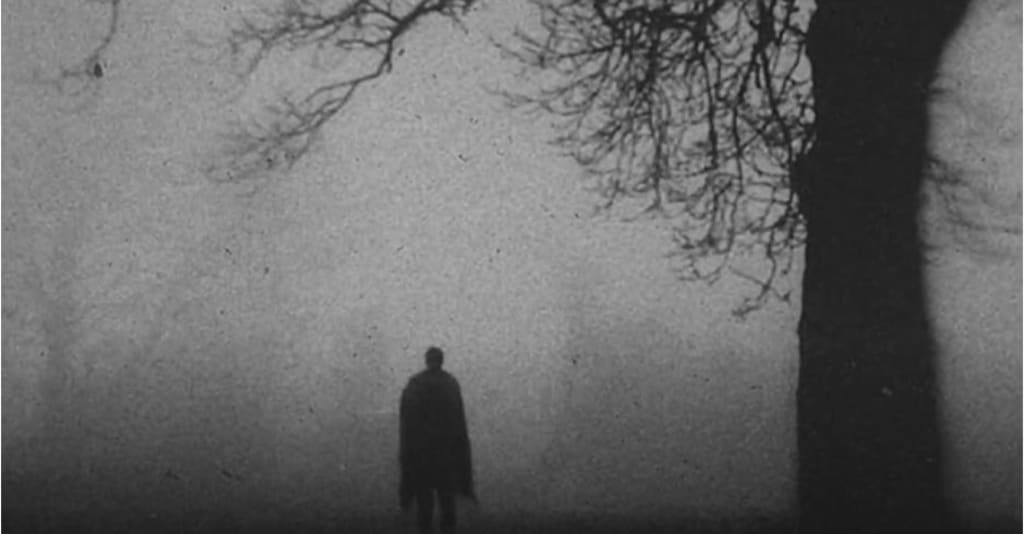The Three Most Mysterious Men in History.

Throughout world history, there have been many people whose lives still raise many questions, and far from all the mysteries surrounding these people are destined to be unraveled. Here are three of the most mysterious individuals in world history whose secrets remain unsolved to this day.
One of the most enigmatic figures in world history is rightly considered to be the Man in the Iron Mask, a mysterious prisoner identified only by the number 6404809001. To this day, no one knows who this enigmatic man was, but let's start from the beginning. There are few reliable facts about his past. The prisoner was born in the 1640s. The first mention of him in prison archives appears in 1669, when the military minister, the Marquis of Louvois, wrote to the governor of the Pignerol prison about the arrival of a new prisoner who was never to remove his black velvet mask. Moreover, the prisoner was forbidden, under threat of death, to remove the mask or speak to anyone about his past. He was treated as well as possible in prison and was not denied anything he requested. The famous writer Voltaire was deeply intrigued by the identity of the Man in the Iron Mask. Here is what he wrote:
"First of all, one must ponder the fact that at that time, no significant person disappeared. At the same time, it is clear that the prisoner was an exceptionally important individual, and everything related to him was always kept in strict secrecy."
Voltaire cites the testimonies of people who tried to find out from high-ranking officials of that time who the mysterious prisoner was, but all those who could have revealed the secret of the mask refused to say anything, claiming they had sworn an oath and only saying it was a state secret. The prisoner was transferred from prison to prison until, after 34 years, he died in the Bastille. After the death of the Man in the Iron Mask in 1703, the room he lived in was thoroughly searched, the walls were scraped and whitewashed anew, the furniture was burned, and the gold and silver utensils were melted down. The authorities feared that the prisoner might have hidden some piece of paper or scratched a few words about the secret of his imprisonment in a secluded place.
Who was the mysterious prisoner? Some believe that the mask concealed the twin brother of Louis XIV, supposedly isolated from birth and hidden all his life to avoid disputes over the throne. Another version claims that the prisoner was the real father of Louis XIV, as by the time of his birth, Louis XIII allegedly had not been in contact with his wife for many years, and the real father of Louis XIV initially fled abroad but was later captured and imprisoned for life. Perhaps the most original version suggests that the mask concealed none other than the real Peter the Great, who was traveling through Europe at that time. Allegedly, Peter was imprisoned, and an impostor went to Russia in his place. Unfortunately, none of these versions can be verified today, and it is highly likely that the mystery of the Man in the Iron Mask will remain unsolved.
But France is not the only country famous for its mysterious prisoner. In 1803, Emperor Alexander I made a trip to the western lands and visited the fortress of Keksgolm. In this famous prison were once held the Decembrists and the family of Pugachev. The emperor wished to visit the prisoners of the fortress and graciously listened to each of them. Afterward, Alexander inquired if he had listened to all the prisoners, and the fortress commandant replied that there was still one nameless prisoner, a mysterious person who had lived behind a bricked-up door in one of the fortress's cellars for more than 30 years on bread and water alone. Upon learning of this, the emperor, along with his retinue, went to see the prisoner. After opening the rusty door, the commandant brought out a decrepit, half-blind old man. The prisoner's appearance was appalling: his clothes were in tatters, his hair was matted into a single mass, and his entire body was covered with a crust of dirt. The prisoner was washed and groomed, and the intrigued emperor asked him to tell his story. The old man agreed to talk to the emperor but only in private. The emperor consented, asked all witnesses to leave, and after an hour of conversation with the prisoner, came out with tears in his eyes and, to everyone's surprise, ordered the release of the unfortunate man and gave him a spare set of clothes. The old man was granted a pension but was forbidden to leave the vicinity of the fortress. He lived for another 15 years in a wooden house in the nearby village and, after going completely blind, died a quiet death.
And now the most interesting part: to this day, no one knows who this prisoner was. The emperor never revealed the old man's secret, and the old man himself refused to speak to anyone about his past until his death. The fortress archives did not contain a single record of who the prisoner was or why he was imprisoned for 30 years. According to eyewitnesses, the prisoner was brought to the fortress by personal order of Catherine II. A carriage with exhausted horses brought an aristocratic young man in a coat, hat, and shirt to Keksgolm. He was imprisoned, the doors were sealed, and the strictest prohibition was imposed on anyone communicating with him. A small window through which the prisoner received food was his only connection to the outside world for 30 years. It is known that upon ascending the throne, Emperor Paul I familiarized himself with the case of the unfortunate prisoner but did not release him. Many historians consider this fact to be direct evidence that the nameless prisoner posed a real threat to the royal family. There are several versions of who the mysterious prisoner might have been. According to one, he was a certain Ivan Pokaren, claiming to be the illegitimate son of Catherine II. It is believed that he bore a striking resemblance to the Empress and so sincerely believed that she was his mother that people unwittingly began to believe this legend. He was deemed dangerous to the autocracy and was therefore sentenced to eternal imprisonment. However, the punishment and conditions of detention seem too strange for a mere impostor. Another version claims that the prisoner was the young Emperor Ivan VI, overthrown from the throne. Allegedly, on the first day of her reign, Catherine II issued a decree transferring Ivan from the Shlisselburg Fortress, where he was held at that time, to the Keksgolm Fortress to erase the memory of the heir to the throne. However, no one can reliably say who the prisoner of Keksgolm was.
The next person may not seem so mysterious at first glance, but a series of extremely strange circumstances that accompanied his life still compel many to search for the secrets of Kaspar Hauser's past.
On May 26, 1828, a young man of about 16 appeared on one of the streets of Nuremberg. He looked bewildered and had difficulty walking. He had two letters with him, allegedly from his mother and guardian. The mother complained that she was too poor to raise the child, and the guardian asked that he be enlisted in the cavalry regiment where his father had served. Passersby noticed the young man, but he only repeated the learned phrase, "I want to be a cavalryman like my father," nonsensically. At first, he was taken for a madman, but soon people realized that things were not so simple. The young man behaved as if he had never been in human society before. When given paper and pen, he unexpectedly wrote in crooked letters "Kaspar Hauser." It is likely that he had been taught only to write this name, by which he became known.
Kaspar's mystery stirred society. All the local newspapers wrote about him, and at one point, Kaspar became a real celebrity. Many experts tried to find out where he had come from. Due to his limited vocabulary, Kaspar could tell very little about his past. He lived in a cramped room from which he could not leave. An unknown overseer brought him food and cleaned the room. Then the overseer began teaching him to write "Kaspar Hauser" and forced him to learn the phrase about his father being a cavalryman. One day, he took Kaspar with him, and they walked for several days until they reached the city, where he was left alone. Learning about the story from the newspapers, Germany's most famous criminologist, Feuerbach, decided to start his private investigation.
Then a series of very strange events began. Hauser moved to a new guardian, where he met the British Lord Stanhope. This strange man suddenly arrived in Germany and claimed he wanted to adopt Kaspar, take him with him, and give him an education. Stanhope assured Hauser that he supposedly came from a noble family and that he had great power by birthright. Stanhope moved Hauser to his German home under the pretext of safety and left for Britain, leaving Kaspar with a certain schoolteacher, Meyer. This was a very strange and suspicious person who, according to recollections, treated Hauser with near disgust. In May 1833, criminologist Feuerbach died suddenly from a strange illness. Rumors spread that he had been poisoned, as he was young and full of energy. At that very moment, following Feuerbach's investigation, information emerged that Hauser was indeed of noble blood.
What happened next? Six months after Feuerbach's death, Hauser was walking in a park when an unknown man approached him, confirmed his identity, and offered to share the secret of his birth in a secluded place. After moving away from prying eyes, the stranger stabbed Hauser with a knife and fled. Hauser managed to reach his home, but Meyer did nothing. When rumors spread that Hauser was injured, Meyer began to claim that Kaspar had stabbed himself to attract attention. However, Hauser's condition worsened; the wound was very severe, and help came too late. Hauser managed to describe the attacker, but because of Meyer, time was lost, and a few days later, Kaspar died.
Feuerbach's investigation results were not published for several decades to avoid scandal. According to his version, Kaspar was the son of the Grand Duke of Baden, Karl Ludwig. The nuance is that Karl Ludwig's grandfather had children from a second marriage who could not claim the throne if Kaspar or his brothers were alive. Thus, in 1812, Karl Ludwig's son was born, who coincided in age with Hauser but soon died under strange circumstances. His mother was simply not allowed into the child's bedroom and was only told that he had died. Four years later, the second son died, and in 1818, at the age of only 32, Karl Ludwig himself passed away, and the throne went to the descendants of the second marriage. Some researchers believe the first child did not die but was hidden from his mother and taken to a small room in one of the castles where he spent his childhood. At some point, apparently considering him feeble-minded and harmless, Kaspar was brought outside, but when a fuss arose around his name, Hauser was killed, and Stanhope may have been the trusted agent of those who ordered the murder. In the 20th century, a hidden room was found in one of the castles near Nuremberg, inside which was a wooden horse. Hauser said his only toy was a wooden horse, and DNA analysis of his hair confirmed a 95% match with Ludwig's descendants. However, the final point in this case has not yet been made, and enthusiasts are awaiting further research.
About the Creator
Enjoyed the story? Support the Creator.
Subscribe for free to receive all their stories in your feed. You could also pledge your support or give them a one-off tip, letting them know you appreciate their work.





Comments
There are no comments for this story
Be the first to respond and start the conversation.